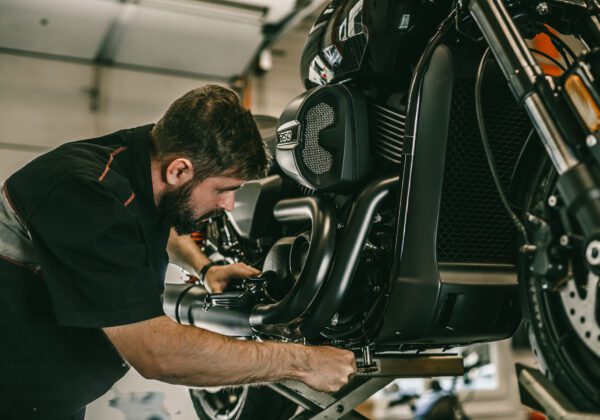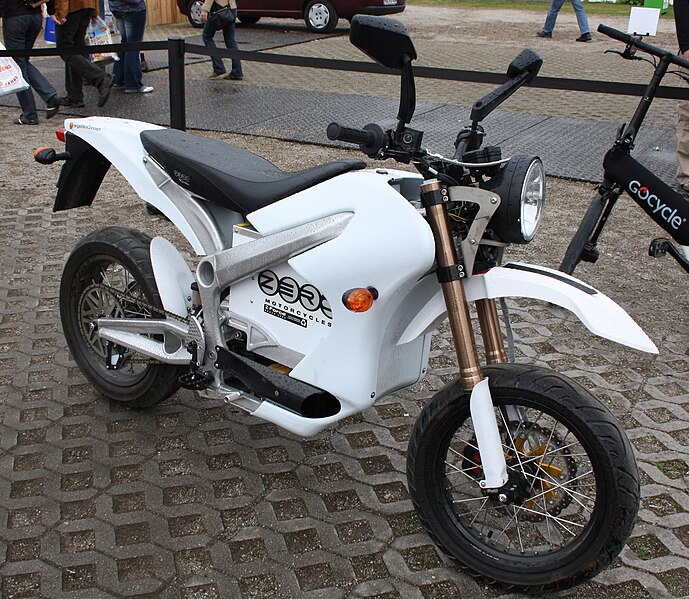Understanding What It Means to Sell a Financed Vehicle

When you finance a motorcycle or any powersport vehicle, the lender technically owns the vehicle until your loan is paid off. That ownership is reflected in what’s called a lien, which gives the lender legal rights to the asset. If you stop making payments, they can repossess it.
So if you’re thinking about selling your motorcycle with a lien still attached, your first step is simple: know your payoff amount.
This is the amount you still owe the lender—including any interest and fees that apply if you pay it off early. You can get this figure by contacting your lender directly and requesting a “payoff quote.”
Step 1: Find Out Your Vehicle’s Payoff Amount
Before you list or market your vehicle, you need to know the hard numbers. The payoff amount helps you determine:
- Whether you’re underwater (you owe more than the vehicle is worth)
- Whether a private sale will cover your loan
- What you’ll need to bring to the table if there’s a shortfall
Ask your lender to provide a written payoff statement with an expiration date. These quotes are usually valid for 7–10 days.
Step 2: Get a Realistic Estimate of Your Vehicle’s Market Value
Once you have your payoff figure, compare it to the fair market value of your powersport vehicle. Use tools like:
- Kelley Blue Book (KBB) for motorcycles and ATVs
- Cycle Trader, ATV Trader, and NADA Guides for used powersport values
- Comparable local listings on Facebook Marketplace or Craigslist
If your motorcycle is worth more than you owe, you’re in a great position. That means you’ll have equity left over after the sale.
If your vehicle is worth less than the loan balance, don’t panic. You still have options—we’ll cover those in a moment.
Step 3: Understand the Buyer’s Perspective
Buyers want to walk away with the vehicle title in hand. So, if you’re selling a motorcycle with a lien, you’ll need to coordinate the title release. There are two main ways this plays out in the real world:
- You pay off the loan before the sale. This is the cleanest route—you get the title, then sell.
- You sell the vehicle while the loan is still active. In this case, the buyer (or a third party) pays the lender directly to release the lien.
In either case, transparency is crucial. Serious buyers won’t be scared off by a lien—as long as you’re clear and confident about how the sale will work.
Step 4: Plan for the Transaction Logistics
Here’s how to actually handle the sale when you still owe money on the vehicle:
Option A: Selling to a Private Buyer
In a private party sale, you’ll need to work with your lender to facilitate the payoff and transfer. Here’s what that might look like:
- The buyer meets you at your lender’s branch (if local).
- The buyer pays the lender the agreed amount (up to the payoff).
- You or the buyer pay any remaining loan balance.
- The lender sends the title to you or directly to the buyer once paid.
Some lenders also allow escrow services to hold funds until the lien is cleared, which offers protection for both parties.
Pro tip: Some buyers may hesitate to deal with lienholder paperwork. Offering clear instructions or a step-by-step summary of the process can make the transaction more appealing.
Option B: Selling to a Dealership or Powersport Buyer
This is often the fastest and easiest route, especially if you’re short on time or don’t want the paperwork hassle. A company like Powersport Buyers specializes in buying financed motorcycles, ATVs, and UTVs—even if you still owe money.
We’ll:
- Get your payoff amount from your lender
- Coordinate directly with them to pay off the loan
- Pay you any remaining balance after the lien is cleared
- Handle all paperwork, title release, and pickup
It’s an ideal option if you want to avoid the complexities of selling privately with a lien in place.
Step 5: Dealing With Negative Equity
If your loan is larger than your motorcycle’s resale value, you’re in a negative equity situation. You still have three options:
- Pay the difference yourself at the time of sale to close the gap.
- Roll the difference into a new loan if you’re buying another vehicle (though this increases your new debt).
- Sell to a buyer willing to cover the payoff—and work out a payment plan or agreement for the difference.
Negative equity is common, especially on newer bikes and powersport vehicles that depreciate quickly. The key is to be proactive and realistic about your sale price.
Step 6: Keep Track of the Paper Trail
Once the sale is done, make sure you:
- Get written confirmation from the lender that the loan is closed
- Confirm the lien release has been processed
- Provide the buyer with a bill of sale
- Notify your insurance company to cancel coverage
This protects you from any legal or financial liability after the sale.
Final Thoughts: You Can Sell a Financed Powersport Vehicle—Here’s How to Do It Right
Whether you’re trying to sell a financed motorcycle, ATV, or UTV, the process may seem complicated—but it doesn’t have to be. With the right approach, it’s entirely possible to get out from under your loan and move forward with confidence.
The most important steps are:
- Understanding your loan balance
- Knowing your vehicle’s real value
- Being transparent with buyers
- Working with the lender to coordinate the title release
If you don’t want to deal with all the moving parts—or if you want a fast, secure sale with no listing or meetup hassles—Powersport Buyers is here to help.
We specialize in buying financed powersport vehicles and handle everything from payoff to pickup.
Get started today by submitting your vehicle info at PowersportBuyers.com. We’ll give you a competitive, no-obligation offer—even if your bike or ATV still has a lien.


